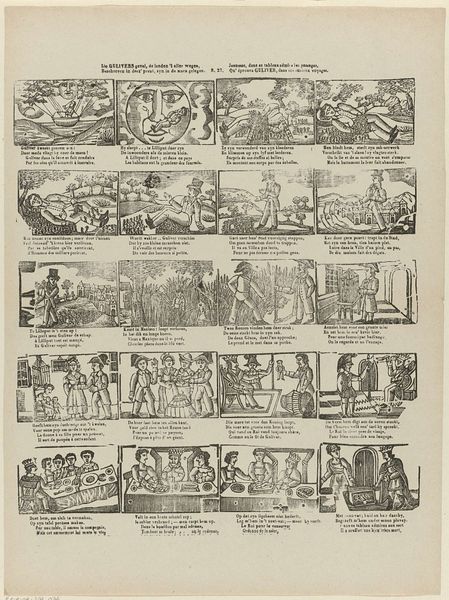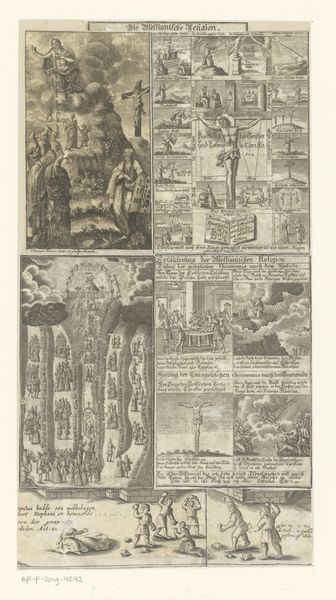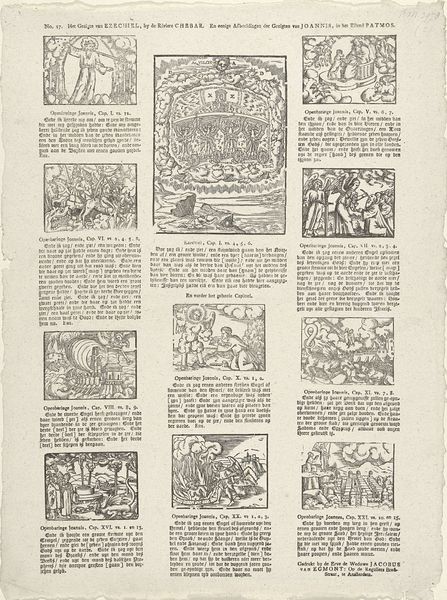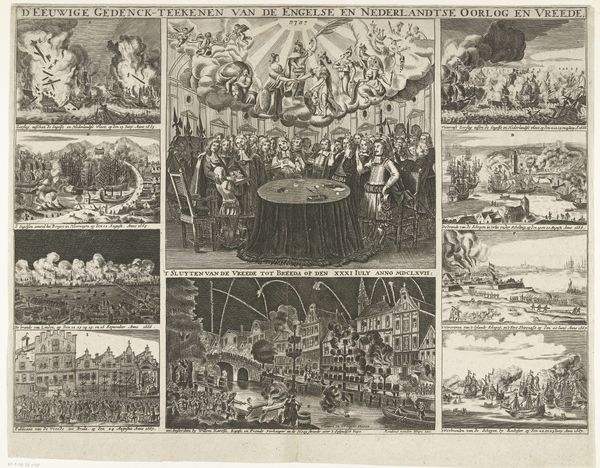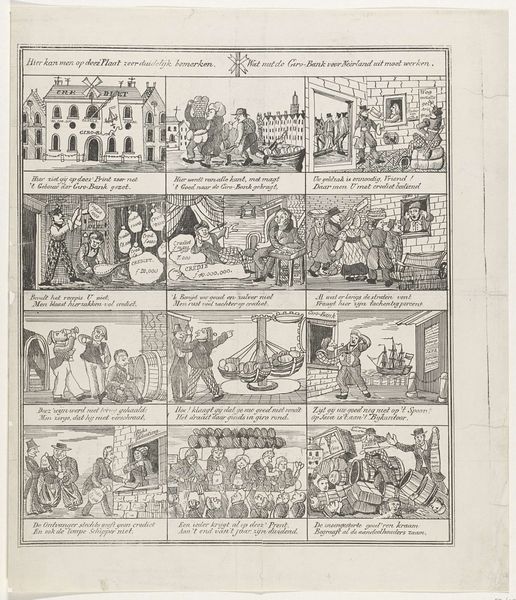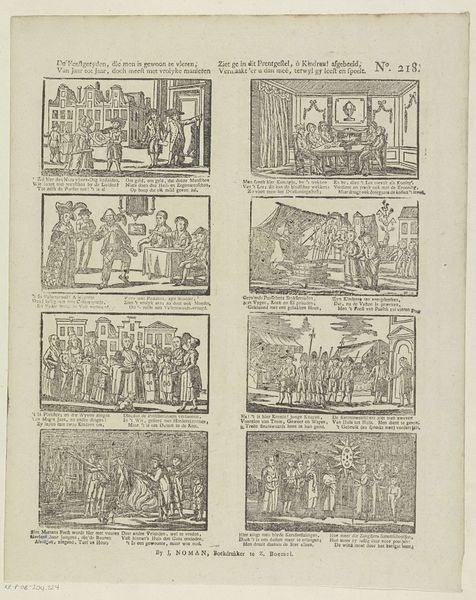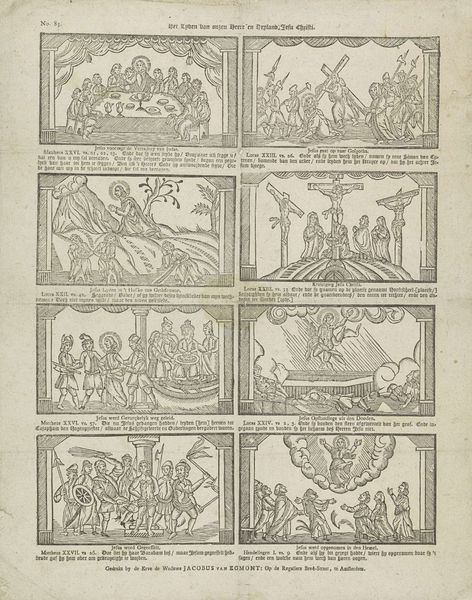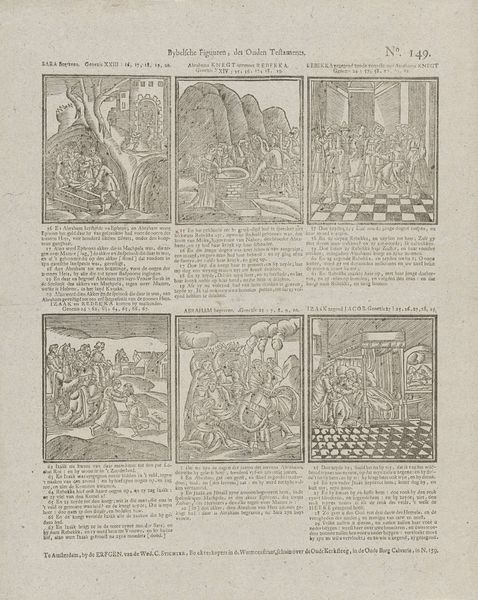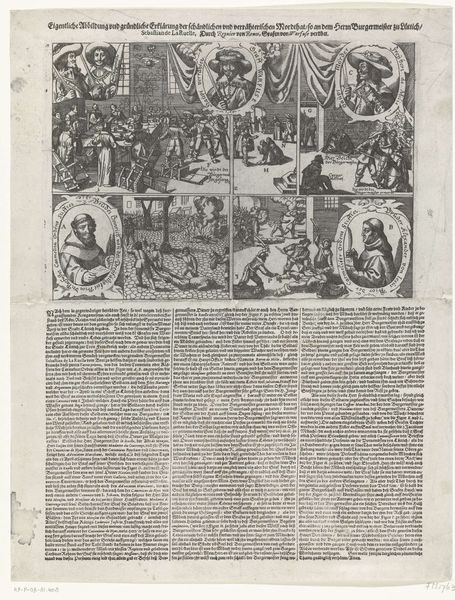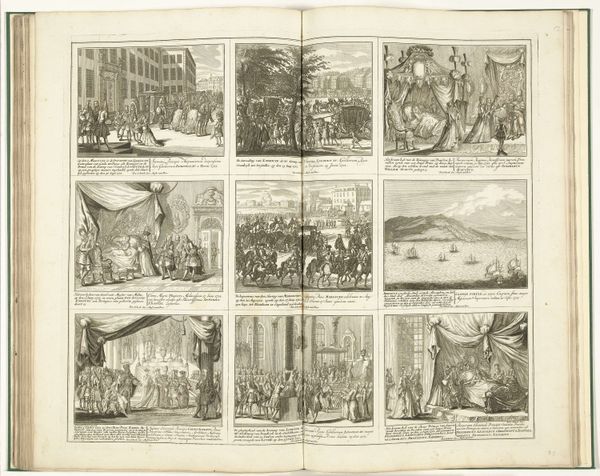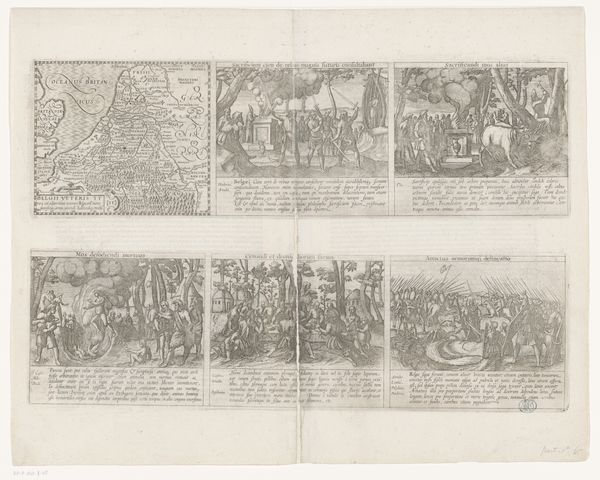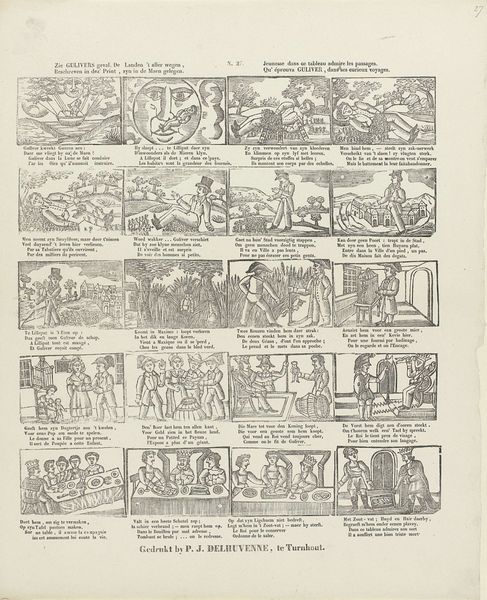
Feestelijke optocht in Wormer, ter ere van de vrede van Munster, 1648 1649
0:00
0:00
print, engraving
#
narrative-art
#
dutch-golden-age
# print
#
history-painting
#
engraving
Dimensions: height 560 mm, width 950 mm
Copyright: Rijks Museum: Open Domain
Curator: Wow, that's intense! It looks like a hyper-detailed map filled with tiny, almost comic-strip-like panels and reams of dense text. All in black and white. Overwhelming, but fascinating! Editor: It is quite something. What you are observing is "Feestelijke optocht in Wormer, ter ere van de vrede van Munster, 1648." It commemorates a festive procession in Wormer celebrating the Peace of Munster in 1648. It was made as a print in 1649. You can view it in the Rijksmuseum collection. Curator: Munster, right – ending the Eighty Years' War? Suddenly, it feels much grander than a mere document. There’s so much celebratory detail squeezed into this single sheet. But why the intense rows of text on either side? Editor: The artist layered these images with written details offering a complete record. These passages detail different aspects of the celebrations, offering explanations and poems written for the occasion. In essence, these engravings and descriptions allow future generations to appreciate the profound significance of peace. Curator: Ah, a memory palace on paper! So the text isn’t just informational; it’s meant to evoke feeling, and reflection. Seeing the procession of figures—I wonder about the social hierarchies. Who is positioned where and what does that tell us about Wormer society at the time? The engraving gives off that sort of granular symbolism. Editor: Exactly. It would have had profound symbolic resonance at the time. Images of community celebrations and victory underscore the return to order, renewed stability, and shared values. It depicts everything from official parades to more everyday acts of joyful living. Curator: It's clever. So often, art of this period focused on rulers or battlefield glory, but here the focus is very clearly on how peace touches ordinary life. Look at how that changes the narrative about history. It moves it away from ‘grand events’ to the intimate space of a town! It's deeply effective. Editor: Indeed. Prints such as this helped to build a narrative and shared consciousness among a growing reading public at this time. Through precise visuals and descriptions, citizens were able to grasp the implications of a historic moment, helping solidify their collective understanding and belonging. Curator: So much more than an informational poster. It offers insights into Dutch society at the time and its hopes and collective memories surrounding the Peace of Munster! I leave today a little more grounded.
Comments
No comments
Be the first to comment and join the conversation on the ultimate creative platform.
